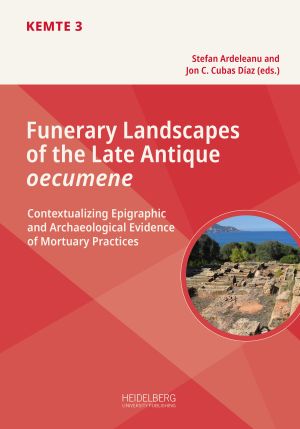Zitationsvorschlag
Lizenz (Kapitel)

Dieses Werk steht unter der Lizenz Creative Commons Namensnennung - Weitergabe unter gleichen Bedingungen 4.0 International.
Identifier (Buch)
Veröffentlicht
Funerary Customs in Sacred Spaces
Privileged and Monastic Burials in the Provinces of “Palaestina” and “Arabia”
Abstract The aim of this paper is to reflect on the relationship between burials and sacred spaces in the provinces of Palaestina and Arabia. Some peculiar case studies in monastic and rural contexts will be analysed, taking into account their typology, their arrangement in the built environment and their relation with the surrounding architectural space. Moreover, the key patterns of funerary customs in the regions under examination will be defined, considering the number of people buried in individual or collective tombs, the funerary objects and the epigraphic records.
A holistic approach, involving many disciplines related to funerary research, will therefore be undertaken. Particular attention will be paid to the results of bio-archaeological analysis of skeletal remains found in the burials of the coenobia of Mt Nebo and St Lot at Deir ‘Ain ‘Abata, in order to better understand the identities of the deceased. Epigraphical analysis of mosaic epitaphs in the monastery of Kyria Maria at Scythopolis-Beth Shean will be used to study familial burials in the Palestinian ecclesiastical context. A reflection on funerary goods will be applied to the tombs found in the churches at Umm er-Rasas in order to define the sepulchral habits of the local elite and the commemorative practices for their deceased.
Keywords Privileged burials, monasticism, funerary goods, bio-archaeological analysis, funerary epigraphy, pellaïkon tombs






